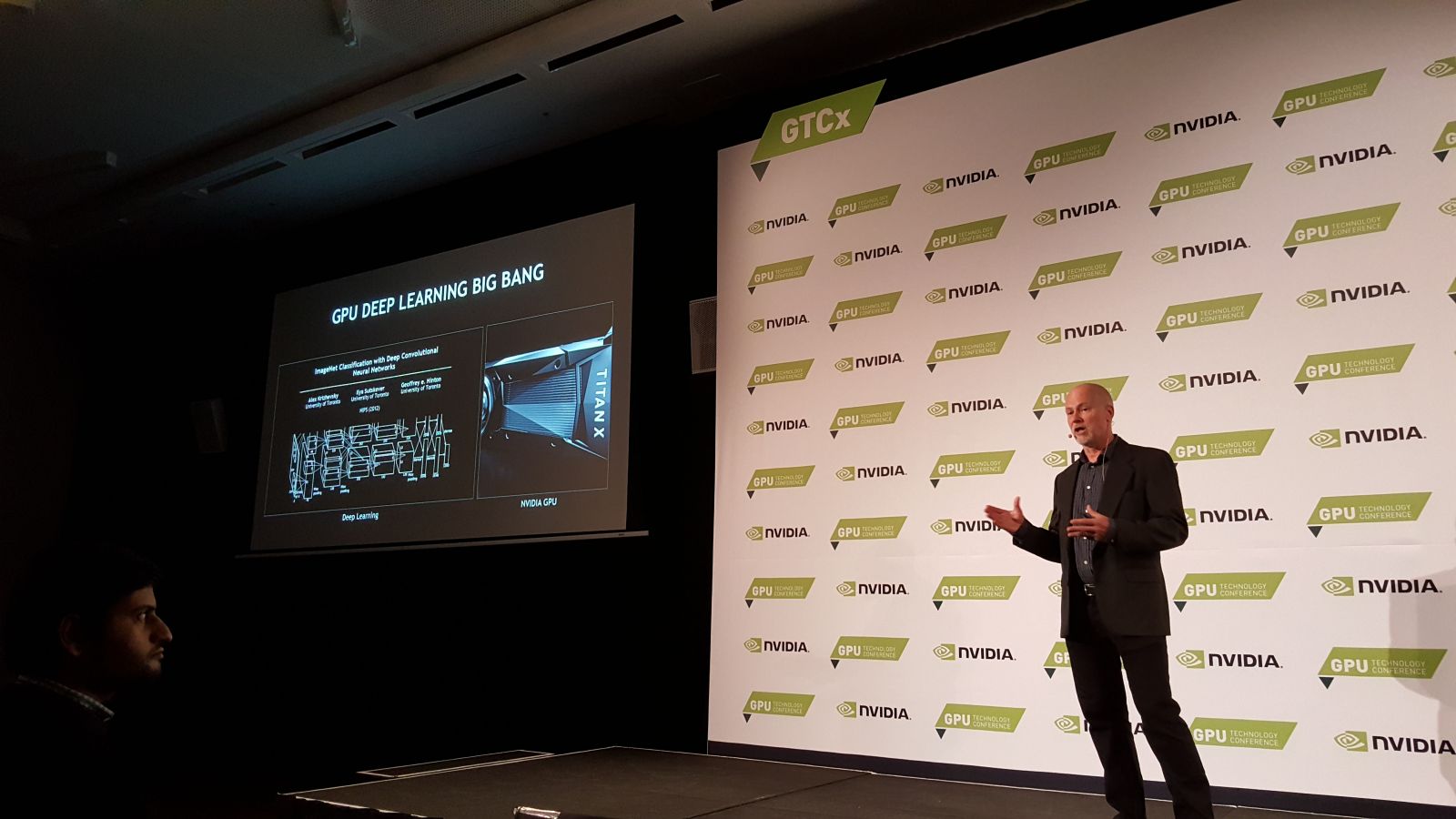GTCx, a dazzling preview of the future
By Ajith Ram October 7, 2016
- Conference highlights cutting-edge AI research
- Showcase for VR simulations in multiple fields

IT was not big in terms of attendee numbers, but it was certainly mesmerising from a content perspective. GPU manufacturer, Nvidia, held its first GTCx Australia conference in Melbourne earlier this week.
During the keynote, Dr. David B. Kirk, Nvidia Fellow and the company's former chief scientist, traced the timeline of GPU-accelerated computing from a decade ago to its current applications. In a subsequent interview with DNA, he expounded further on the complexities of GPU programming and the future of the current CMOS manufacturing technology.
He was also of the opinion that despite the predicted end of Moore's Law, CMOS-based manufacturing technology will be used for a very long time as it is very well understood. Kirk also dismissed Intel's claims that its Xeon Phi co-processors were faster than Nvidia's GPUs for deep learning.
Watch out for DNA's full interview with David Kirk in the near future.
One of the other highlights at GTCx Australia was the eerily lifelike baby created entirely through GPU-accelerated computing. The speaker, Mark Sagar, demoed the fourth generation of his creation, BabyX.
You can see the third iteration of the virtual baby in the video below.
According to Mark Sagar, his company Soul Machine's goal is to make human-computer interaction more human by creating artificial nervous systems which drive virtual characters in real-time. The system underlying the BabyX demo has been designed to integrate realistic computer graphics and a wide range of neuroscience models. It is highly scalable and the company hopes to simulate the entire human body on a cloud-based supercomputer in the near future.
The GTCx Australia conference was co-hosted by Monash University. This is the first major event under the recently-formed Monash-Nvidia partnership. Nvidia showed its recently announced Tesla P4, P40 and P100 for PCIe accelerators which are aimed at the fast growing deep learning sector which uses GPUs to accelerate computing tasks.
Responsiveness is key for services such as interactive speech, visual search and video recommendations. As deep learning models increase in accuracy and complexity, CPUs are no longer capable of delivering an interactive user experience.
According to Nvidia, the Tesla P40 and P4 deliver over 30x faster inference performance compared to a CPU for real-time responsiveness. The company says a server with eight P40s can replace more than 140 CPU-only servers for inference workloads, resulting in substantially higher throughput with lower acquisition cost.

The Tesla P4 is a 50 to 75 watt GPU. Its elder brother, the Tesla P100 for PCIe, lets high performance computing (HPC) data centres replace up to half a rack of commodity CPU nodes with a single GPU-accelerated node. One of these servers displayed at GTCx Australia is Nvidia's recently announced DGX-1 'supercomputer in a box'.
Hardware vendors Dell, IBM, Lenovo, HP Enterprise, MSI, Xenon, and Leadtek were the event sponsors. Facebook and Monash University were the deep learning thought leadership partners.
Related Stories:
AMD unveils world’s first hardware-virtualised GPU line
AMD looks to heaven for salvation
Nvidia announces new graphics card
Review: Nvidia GeForce GTX 1060, the new mainstream champion
Nvidia accelerates self-driving vehicle, AI research
For more technology news and the latest updates, follow us on Twitter, LinkedIn or Like us on Facebook.


